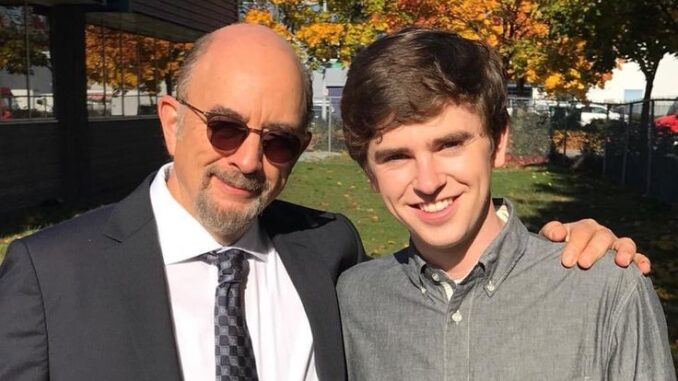
When The Good Doctor premiered, few could have predicted the massive wave it would create across the television landscape. On paper, it seemed like another medical procedural—white coats, emergency surgeries, dramatic life-and-death decisions. But what set it apart was something that resonated deeply with audiences around the world: heart. By the end of its first season, The Good Doctor had not only become the biggest new TV hit of the year, but also redefined what it means for a network show to truly connect with its viewers.
The show’s immediate success can be largely attributed to Freddie Highmore’s captivating performance as Dr. Shaun Murphy, a young surgeon with autism and savant syndrome. Highmore, best known for his chilling work in Bates Motel, shifted gears entirely to inhabit a character whose quiet determination and raw vulnerability drew both empathy and admiration. His nuanced portrayal offered something rarely seen on mainstream television—a neurodivergent lead who wasn’t defined by his limitations, but by his brilliance, resilience, and evolving humanity.
But The Good Doctor wasn’t just a showcase for one extraordinary actor. Its success stemmed from the delicate balance it struck between emotional storytelling and the procedural structure audiences have always loved. Every episode brought with it a fresh medical mystery, yes—but it also carried an emotional arc that tapped into universal fears, hopes, and questions. Whether dealing with ethical dilemmas about who gets the last available organ, or the everyday challenges Shaun faces in reading social cues, the show managed to merge the clinical with the personal in a way that felt deeply authentic.

Behind the camera, The Good Doctor also had a secret weapon: showrunner David Shore, the mastermind behind House, M.D.. Shore brought with him a deep understanding of how to construct a medical drama that wasn’t afraid to ask uncomfortable questions or challenge viewers. But whereas House was driven by cynicism and acerbic wit, The Good Doctor was driven by empathy, optimism, and sincerity—a tonal shift that struck a chord in an increasingly chaotic and jaded media landscape.
Timing, too, played a role in its meteoric rise. Debuting at a moment when audiences were craving heartfelt, human-driven content, The Good Doctor offered a refreshing antidote to the dystopian and morally gray themes dominating television. It presented a hero who didn’t need to be suave, aggressive, or conventionally charming. Instead, Shaun Murphy was quiet, awkward, sometimes frustrating—and entirely lovable. For viewers living with autism or raising neurodivergent children, the representation was long overdue. And for everyone else, it was an invitation into a different way of seeing the world.
The show also made an impact globally. In markets like South Korea (where the original series originated), Canada, the UK, and Latin America, The Good Doctor quickly rose to the top of ratings charts. Its success signaled a universal appetite for stories centered around compassion, difference, and overcoming adversity. Social media played a major role, with fans sharing clips of Shaun’s most powerful scenes, quoting lines, and praising the show for its respectful handling of difficult topics—from discrimination and grief to medical burnout and mental health.
